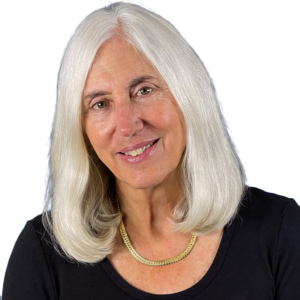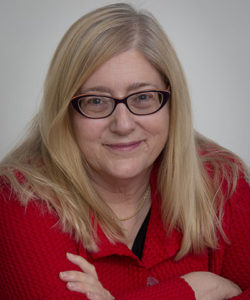Tips for Traveling Your Creative Path at Any Age
In 1977 at 28, I decided to make my way as an artist and writer. I knew that to succeed required more control of my time than I’d had in previous jobs. I quit my position as Program and Communications Director at an educational nonprofit in Kansas City, moved to San Francisco, rented a painting studio above a fortune cookie factory, and set up a drafting table in my apartment to begin a business in design and communications.
Fast forward to 2025, my resume includes art exhibitions, published books and songs, and a long list of clients served through my design and strategic visioning consulting practices. At 76, I’ve been my own boss for 48 years and never had a concept of retirement. To whom would I submit my resignation? Through lean years and bounty, setbacks and successes, a few guiding principles have lit my creative pathways and led to an interdisciplinary career that continues to intrigue. For this blog and with my new novel in mind, I’ll focus mostly on writing, but the principles apply to other disciplines.
Your Creative Path Tip One. Do What You Love
… so you can do more of what you love.
The more familiar second half of that sentence is “…so the money will follow.” In my experience, the money often does follow in surprising ways. I believe that if we do what we love, the payoff is in the doing and doing more. Since my college days, I’ve kept sketchbook journals. A decade of entries about my investigations in painting and learning to garden inspired content for my first book, “A Painter’s Garden,” in which I explored creative process.
After I’d submitted the manuscript and art to Warner Books for publication in 1997, I began writing a short story. At 90 pages, I realized with trepidation that I was writing a novel! I loved reading novels, but had never had an ambition to write one.
Over the next eight years, I participated in monthly writing groups, workshops, and intensive fiction retreats, finished two novels, and began a third, which eventually became “Tap Dancing at the Bluebird.” Wanting to learn more about fiction craft, I entered a low residency MFA at Bennington at the age of 56 and wrote a different novel as my thesis.
The program’s motto was “Read one hundred books. Write one.” That directive led to closer reading and analysis of literature. It also widened my path to include teaching writing, based on what I’d learned about craft. I developed a curriculum to teach in bookstores, community venues, and online. I formed friendships with writers and book industry professionals, including Vicki DeArmon, who was marketing director of the bookstores where I taught the writing workshops. She is now my publisher at Sibylline Press, which she co-founded to publish “the brilliant work of women authors over 50.”
An added benefit of doing what we love is meeting people who pursue similar passions. In the long run, as we build relationships over shared interests, we build communities of support for doing more of what we love together.
In 1985, my husband, Dennis Hysom, and I wrote songs based on re-imagined nursery rhymes, and he recorded them as gifts for children we knew. Those songs became the basis for a children’s media business, which resulted in many song albums, a licensing program, video, and book with song CD. “Wooleycat’s Musical Theater,” which I co-authored and illustrated, was my second published book. Through our Wooleycat projects, we have enjoyed many amazing opportunities and wonderful relationships with people we’ve met through this music.
Your Creative Path Tip Two. Start Small
…. and do what you can finish with the time and materials you have.
Over the decades, I’ve returned again and again to the “start small” technique — whether a sketch or letter to a friend. The seed of an idea can grow to claim more time and attention and bear fruit in the form of a gallery full of paintings or a published book. As the work asks more of us, we find more to give to it.
I’m grateful to my paternal grandmother for the diaries that she kept during the Great Depression. In entries on whatever paper scrap was handy, her gentle voice captures the resilience of her family in their daily activities, along with the hardships: the price of meat, professional men unable to find work, a lean 18 months when clients of my architect grandfather couldn’t pay for the building of their churches and schools, my father at 14 supporting the family with after-school jobs.
My aunt gathered, transcribed, and printed the diary papers for the grandchildren. An entry from May 1932 intrigued me to imagine the details of how it might have been to live during that time. In 2004, I wrote a paragraph and then pages, which demanded more time and intention and became the manuscript for “Tap Dancing at the Bluebird.”
Your Creative Path Tip Three. Keep Moving Forward
…. begin to find a flow, a rhythm, don’t quit unless you want to, reframe what you love so you can do more of it in new and different ways, and begin again.
When I moved to San Francisco at 28, I signed up for improvisation classes and also Tai Chi where I met a woman who suggested I could draw the dancers at a small studio where she studied. I drew for a few sessions, and then took classes in contemporary dance, choreography, and tap. I had no talent for it, but loved it, so I began collaborating as a set and costume designer on performances with the choreographers over the next 14 years, attending rehearsals, learning dance language, and absorbing choreographic structures. T
he projects were labors of love for me, not remunerative, yet my association with dance has reaped a lifetime of rewards, including the knowledge I gained of my own body and the benefits of movement, as well as content for writing a novel in celebration of dance. When working on the manuscript, I watched tap lessons on YouTube.
In the novel, roving youth Kip teaches my young female protagonist Mattie to tap in 1932 and sets her life in motion. When her family loses their home, she follows Kip riding the rails to California where they are separated by a tragic accident. In her character arc, she becomes a child performer on stage and screen, at 30 establishes a school to teach children and adult actors how to dance and move through scenes, and at 60 becomes a neuroscientist studying the relationship of movement and music to memory.
At novel’s end in 2020, she’s a centenarian and still dancing. Those facts of her arc and all else that happens in the story are fiction, but her affinity for dance, inquisitive nature, and desire to keep moving forward doing what she loves are true to life.
As novelists, we shape our characters. Mattie, like me, has no concept of retirement. I invented her, and she in turn inspires me in the real world where I’m painting, working on new books, reading, writing songs, learning to play the baritone uke, and taking line dance classes.
I have no intention of quitting any time soon.
Find Christine here:



2 Responses
What an inspiring article. I am a 69 year old woman who wrote one Novella and one Novel…but have been procrastinating on publishing…or how to. I write and journal daily along with continuing creating art. Maybe one day I will get up the nerve to move forward with trying to publish. Thank you for the encouragement.
Go for it, Cyndy!